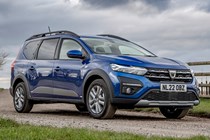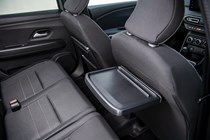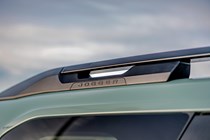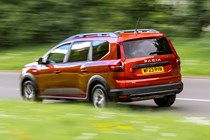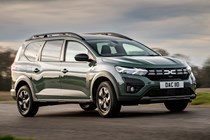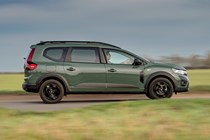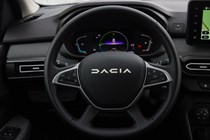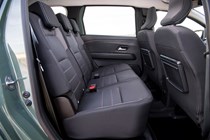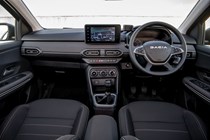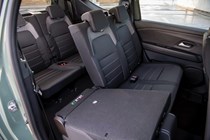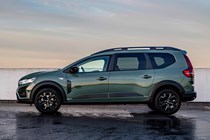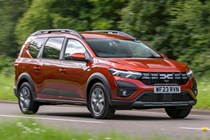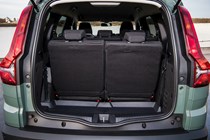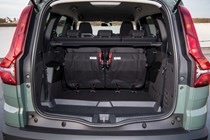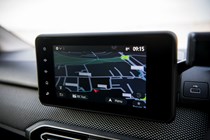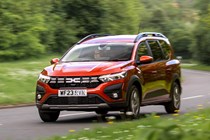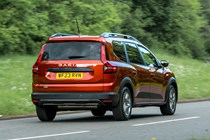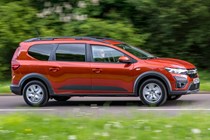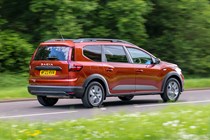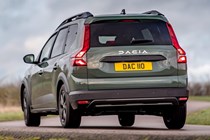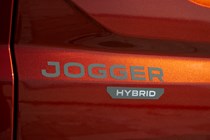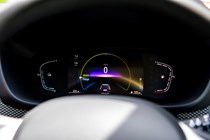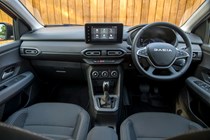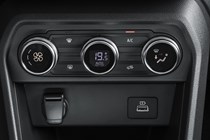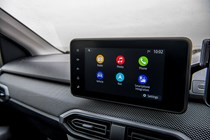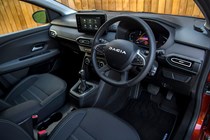Dacia Jogger long-term test


The Dacia Jogger has had a mixed launch in the UK. It arrived to a combination of wonder and awe as the first reviews heaped praise on it and testers were astounded at how it managed to offer seven seats at such a bargain price. This high was then tempered by what can only be described as a poor Euro NCAP crash test result where it only managed a solitary star.
There are nuanced reasons for this, and it doesn’t render the Jogger an unsafe car overnight, but it did take some of the sheen off the striking impact that the budget MPV had made. Tom Webster is living with one for six months to put it to the test. Hopefully this won’t include testing the Euro NCAP score though…
Update 1: Small people-carrier signs up to carry small people
Update 2: Comfortable but frustrating
Update 3: Confusion while topping up the fluids
Update 4: Winning fans with great value
Update 5: More unexpected costs
Update 1: Dacia Jogger joins the Parkers long-term test fleet
I have a confession to make. I am one of the best equipped people on the Parkers team to live with the Dacia Jogger but I really wasn’t sure that I wanted to.
I’m well suited to it because I have a young family with two pre-school children and, largely because of said small people, the Jogger fits our family budget. Nursery is expensive after all…
On paper, the Jogger is great for our family of four – it’s got vast amounts of room for carting around bikes and buggies and it’s got enough tech on board to minimise stress on longer journeys. The problem is not the Jogger though, but its predecessors – I really didn’t like the early Dacias that came to the UK.
I felt they wore their cheapness too close to the surface and if it was my own money, I’d have leaned towards an older, used alternative. Because I spend more time in vans these days, the Jogger I was to live with was my first exposure to the revamped Dacia range, so I was apprehensive about whether I’d have to put up with swathes of hard plastic and sharp corners but have to overlook them because of a cheap price tag/monthly payment. The initial reviews of this new Jogger were very promising to say the least, though.
Which Dacia Jogger have you got?
Right, confession time over. The Jogger started on the right foot by arriving in mid-level Comfort trim, which means it comes with enough kit to ensure it doesn’t feel too budget focused but not so much that it starts to push the price up.

It comes with some things that I consider essential and others that are perhaps less necessary for day-to-day life. This includes:
- An eight-inch touchscreen with Apple Carplay and Android Auto
- Keyless entry and start
- Front and rear parking sensors
- Blind spot warning
- Reversing camera
- Cruise control and speed limiter
There are a few other things with this trim that I don’t think are quite as necessary, but I’ll dig deeper into the specification decisions in a future report. The only other thing I’ll say now is that the options list has remained largely untouched – there is just a spare wheel (a glorious addition in my view and worth every penny of the £300) and that bright blue metallic paint, which is a £595 addition.
What exactly is the Dacia Jogger?
Journalists love to be able to categorise a vehicle, but the Jogger has thrown a few challenges on that front. It’s based on the Sandero, which is a supermini, but the Jogger is far from a supermini estate. It’s not what you would classify an MPV and it doesn’t really have the characteristics of an SUV – it doesn’t sit high enough for a start.
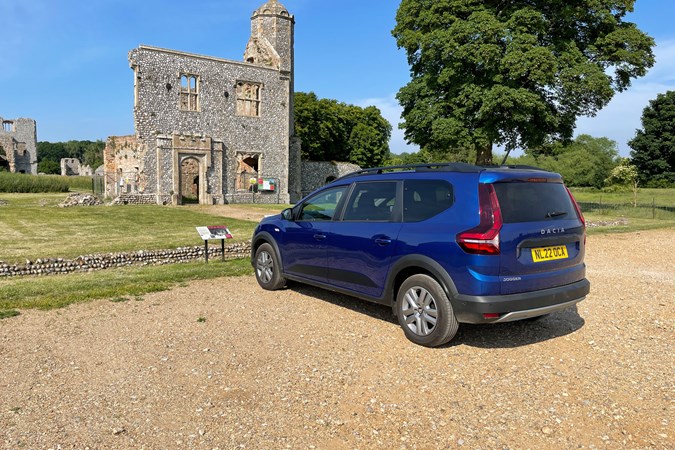
It’s probably best described as a family car then. And certainly has the credentials on paper at least. There is a decent amount of space for adults in those rearmost seats so you should be able to get a pair of adults back there.
I say should deliberately, because so far I haven’t had cause or chance to get anyone in the third row of seats. As I mentioned, I have two children that are young and small enough to need to ride in their own car seats.
There are only two Isofix points in the Jogger, in the two outermost seats in the second row, meaning we have no realistic choice about where the smallest passengers go. The obvious way to get into the third row is to tilt the second row’s seat backs forward and climb through the gap.
There is no chance of this happening while the child seats are attached – the car’s seat base remains still so you can’t move everything wholesale. Because of this, the third row is a no-go area.
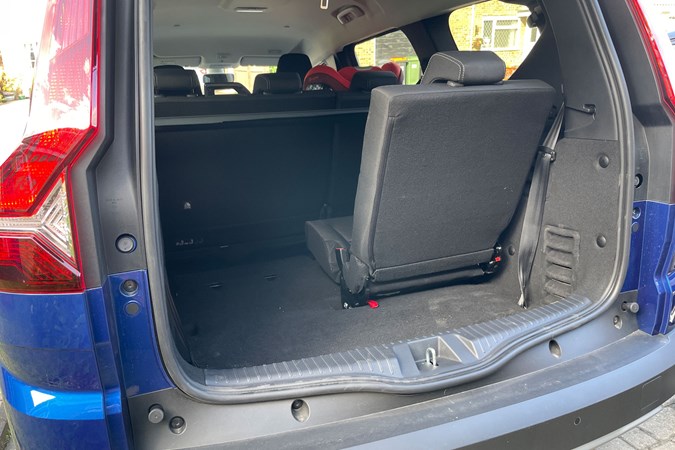
Theoretically you could fold down (or remove) one rear seat and climb into the boot and approach it sideways, but I’m not too keen on doing this myself, let alone asking my in-laws to do so.
A five-seat seven-seater
For a couple of reasons, one of the first things I did when I took the Jogger home for the first time was to remove both of those rear seats. We were due to head off on holiday and the seats were taking up valuable rear space that could be given over to buckets, spades, buggies and suitcases.
The resultant space was glorious – with 696 litres of room we were able to get everything in and still pull the load cover over for those stop offs on the way to and from our holiday destination.

Getting the seats out was really simple too, once I’d worked out which way the various catches needed to go. They are light and easily removed and stay folded up neatly which means they don’t take up loads of room in my garage.
I was a little disappointed with the finishing of the boot though – when you remove the seats you are left with a big hole in the middle of the floor and there is a lip that sends your stuff down towards the front of the car. The hole, which is where the seat connects to the car, is big enough that several small items have ended up down there already. It is loosely covered by a flap of carpet but nothing more.
I know this is where I will have people starting to mutter about how I should expect such things at this price, but would it really have cost much more to engineer a neater solution? It might have added a pound or two to the price, but surely not much more?
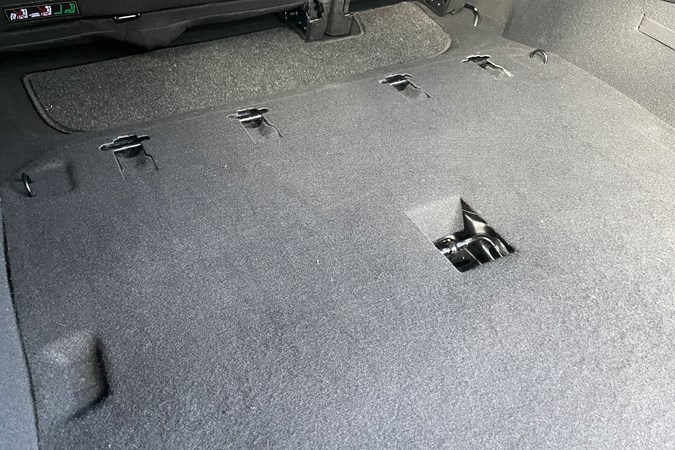
Inflation in action
The budget nature of the Jogger has already taken a hit since its launch anyway. Our car came with a recommended OTR price of £16,695 (£17,740 including those options) when it arrived in May – this pricing being correct as of 1 April.
Now, in July 2022, you don’t stand a chance of getting a Jogger for this price. Drastic inflation means the range starts at £16,645 for the Essential, goes up to £17,945 and then £18,745 for the Extreme SE. The current price of our car represents a rise of £1,000 in a very short period of time.
Factor in that the Comfort had already had a £350 price rise from when the Jogger was first announced and this must be one of the fastest appreciating vehicles in percentage terms.
Oh, and you can’t buy our car any more anyway – the front end has since been redesigned with a new logo and the Comfort logo has been renamed ‘Expression’. The rarity of our Jogger means we expect it to be going up in value on a regular basis from hereon.
Update 2: Clocking up the miles
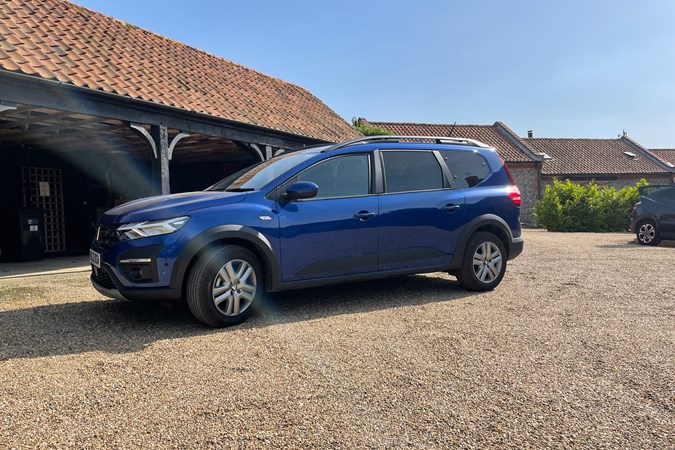
I’ve long been a fan of a UK-based break, and now we have small children to take with us they are extra appealing. One reason I love them so much of late is that said small people seem to require the sort of quantities of stuff that would mean I’d spend as much on excess luggage allowances as I would on flights if we went abroad.
This is just as true when you are simply heading away for a short weekend trip to the family, so the Dacia Jogger has been on a few long trips in the last few weeks, seemingly always stuffed to the roof with detritus.
I’ve touched on how I love the amount of space in the boot before, but even with the seats in place it has been glorious to see how much luggage you can get back there and from the second row backwards it has been behaving as the perfect family transport.
Middle-row niggles
All that space means it is easy to forget that the Jogger is based on a much smaller car – the Sandero supermini. However, there are certain tasks where the diminutive dimensions of the original car make themselves known.
While there is room for a pair of child seats in row two, the Jogger isn’t particularly wide across the middle bench. This rules out getting an adult between the two seats, but that isn’t something you can do in many cars so I’m not going to get too critical about that.
What it does mean, though, is that the seatbelt clips end up tucked underneath the child seat. While this isn’t an issue with a seat with an in-built five-point harness, it is more annoying with our older child’s seat, which requires you to use the seatbelt to secure its occupant. You have to really reach underneath the seat to get the buckle secured – leaning over a small person in the process.
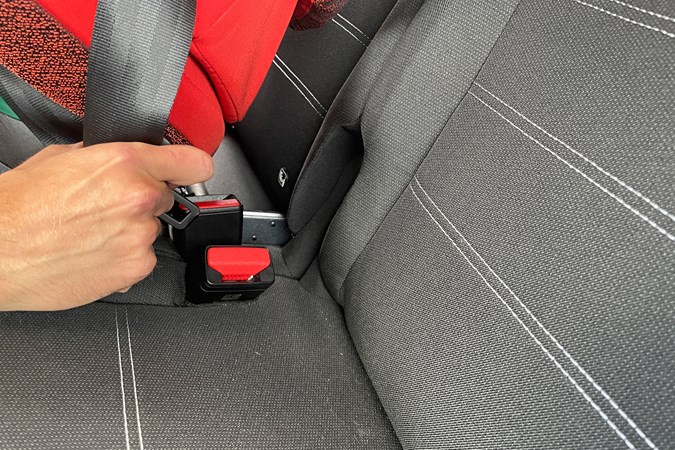
I’ve found that annoying more than anything, particularly on a day when we’re jumping in and out of the car lots of times, but it was more of an issue when a less flexible grandparent attempted to help by clipping child 1 into their seat. They couldn’t reach over and weren’t able to manipulate the buckle into the clasp. With the other side of the car filled with a huge spinning child seat, there was no way to go around the other side and try and clip it in that way either.
I maintain that one easy solution to this, and to the struggles with getting into the third row, would be to fit Isofix in the front seat. Sure, it would mean those arguments I used to have with my sister about who got to sit in the front seat would return to my life, but that’s all part of the fun of a family holiday, right?
Comfort and sound
I started off my first report saying that I was apprehensive about running the Dacia because of my earlier experiences with the model’s range, but niggles with seats aside it’s really started growing on me.
The main reason for this is how it drives on the sort of mundane drives that make up the daily trips we all have in our lives – commuting, collecting kids and trips to visit family are all made much more relaxing by the Jogger, largely because of how comfortable it is.

It rides wonderfully smoothly, and glides over the kind of potholes that pepper the countryside roads that make up a large chunk of my trips into the office. The cunningly disguised steel wheels, compliant suspension and well-insulated cabin means that it’s just quiet and relaxing when it comes to covering long distances. It’s hard to dislike something that leaves you feeling quite so chilled out after a long drive with small people in the back seats.
Update 3: Refilling, refuelling and recharging
It’s got to that stage of life with the Dacia Jogger where I can start talking about fluids. Not only have I filled the petrol tank enough times to get an idea of how economical it is, but it has also made its way through through some of the basics that you have to top up from time to time.
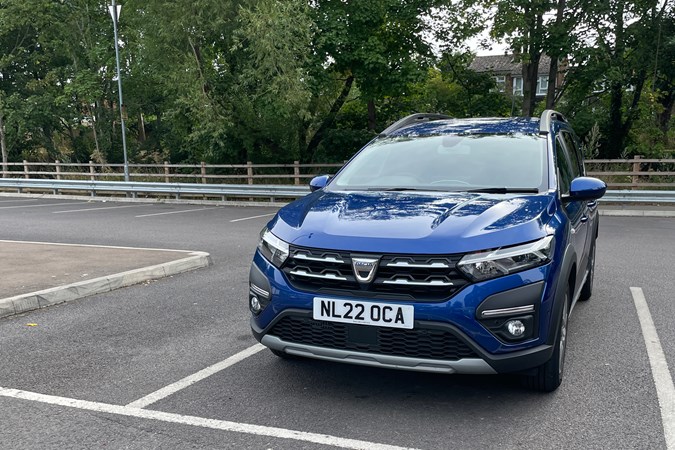
To start with the latter, I was confronted by a dying dribble of windscreen washer fluid on a thankfully not too grimy day, which meant it was time to pop the bonnet and top up the levels. The signs were promising when I first opened it up, with a brightly coloured supporting arm suggesting that would everything would be easily found, even in dark conditions.
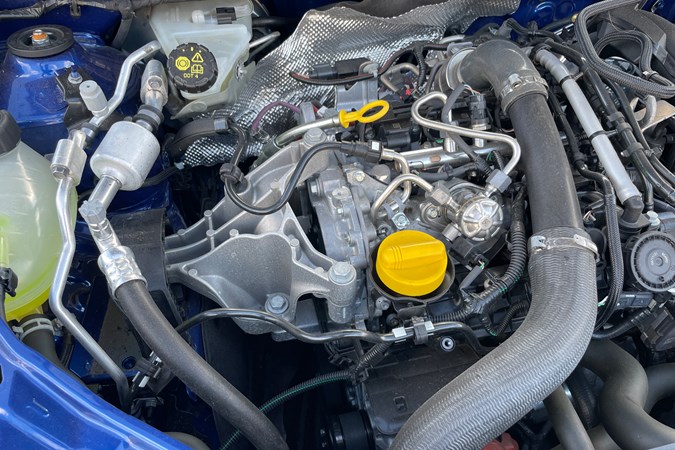
However, a closer look revealed that none of these brightly coloured elements had the little windscreen symbol on it that marks out the cap for the screenwash reservoir. Not wanting to repeat the error of a colleague from a former life, who put oil into the coolant, I dug out the manual.
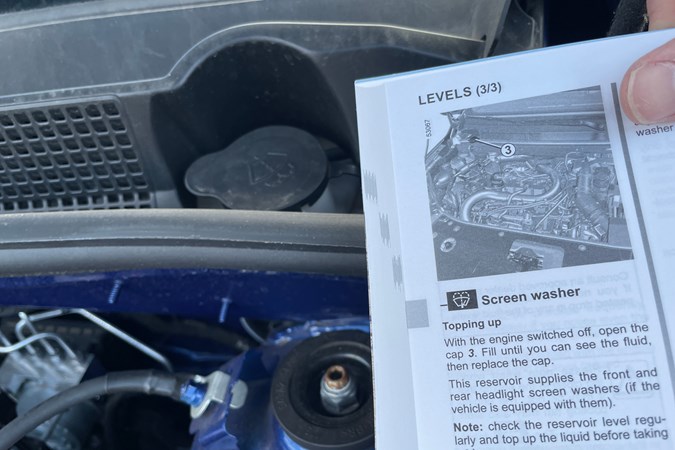
This wasn’t the simple solution I hoped either, as Dacia’s cost-savings-wherever-possible approach meant that the image in the manual was for a left-hand-drive car. I eventually found the right spot, topped up and was on my way. But it was disappointing that the element that the average driver is likely to need more than anything else under the bonnet was so tucked away, especially when so many other parts were highlighted so brightly.
Key changes
Something else reached the end of its natural life recently, too – the battery in the key card. Thankfully I learned this courtesy of a little message on the digital dashboard rather than by being locked out one morning. Out the manual came again, and it was a simple case of sliding the case off and switching it out for a new battery – one of those round, flat ones that feature in a good few toys, so mercifully we had in plentiful supply.

Getting the cover off took a few attempts, as it was stiff enough that it would most likely be tricky for those with less flexible fingers, but once you have the knack it should be easier on subsequent attempts. More than anything, though, it seemed odd to be having to do it after so few miles. Here’s hoping the one I’ve just installed lasts longer than the first, otherwise it won’t just be the array of beeping toys that eat their way through my supply of CR2032s.
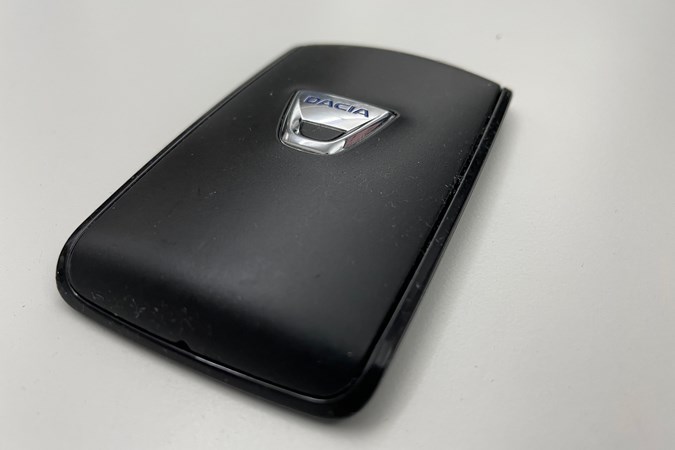
One reason why the battery has perhaps lasted less time than I would expect is the fact that it is constantly locking and unlocking the car whenever you walk up to it. I have a bit of a love/hate relationship with this feature. I love that I can approach the Jogger with arms full of children and stuff and it will just unlock without my digging into my pockets. Equally, I’ve got used to just walking away from the car and letting it lock itself. I’m expecting to leave my next car unlocked on a few occasions…
Equally, it has its pitfalls. On more than one occasion I’ve dashed off with the key in my pocket, leaving my wife sorting the kids out. As soon as she’s shut the door she’s then found that they are locked in, and she has no means of unlocking. Thankfully it hasn’t resulted in an alarm blaring, and it hasn’t happened at a time of emergency, but it has made us wary.
Fuel economy consistency
Finally, one of the least exciting but more crucial elements of living with a car – its fuel economy. I’m now several thousand miles, and quite a few refills into life with the Jogger and the good news is that it is as unexciting as you would hope. The official fuel economy is 48.7mpg and that is not far off what it is getting. Some tanks creep lower into the 43/44mpg region, but add in some longer motorway trips and I’ve seen several tanks average out at 48mpg. Lovely stuff.
Update 4: Winning fans with great value
The Parker’s used car editor, Richard Kilpatrick, borrowed the Jogger recently, and canvassed opinion from some neighbours on the hunt for something new and a bit different. Over to Richard…
‘Tom let me borrow the Jogger, but for once, it wasn’t a colleague after a big box for a tip run – my neighbour wanted a replacement for their Peugeot 2008 with more space, and discovered (like so many who bought new cars before Covid, lockdowns and Russian invasions) that the sums for a new car are now very different indeed. It’s fortunate we have just the thing on the long-term fleet to show them. For comparison, my previous long-termer – the latest Peugeot 3008 – would have been the natural upgrade, but at £48,000 feels out of reach of many working families.
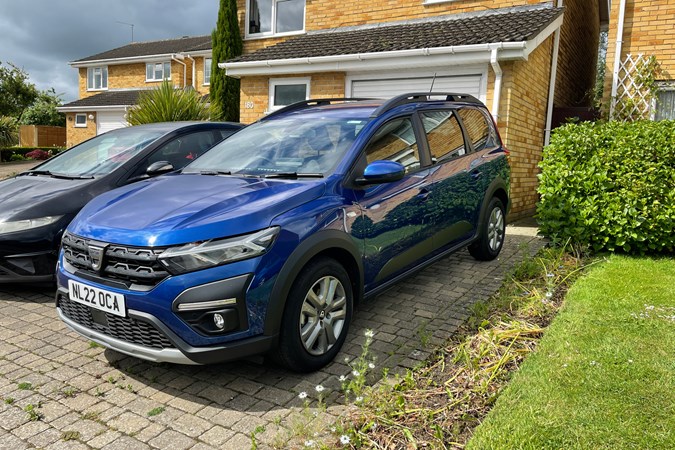
‘Dacia’s already impressed me recently, when the Sandero Bi-Fuel’s quality and refinement made the idea of driving far enough to drain the 700-mile potential range quite appealing, and the Jogger shares a lot of the Sandero’s ‘cost-effective, but not cheap’ aesthetic inside.
‘The 110hp engine has a distinctive voice and very obvious turbo kick, which makes overtaking easy to predict and driving for economy easy to manage by keeping it off-boost. The gearshift is also quite pleasant for a front-wheel drive car. What really impresses is the ride quality. That long wheelbase really smooths out the ripples in the road, and its long-travel suspension shrugs off neglected Fenland tracks without fuss.
‘The overall feeling of solidity, and the space inside, completes a thoroughly sensible family car, so I had no hesitation recommending it to the neighbours. They wanted to move away from diesel because of the reliability concerns over shorter journeys, get a car with more space, and don’t need more than two Isofix points. I suspect I’ll be seeing one appear over the road in the next few months.
‘I compared it to the cars I had when my kids were toddler aged and I chose solid, expensive Volkswagens and the Dacia has the same sort of no-nonsense air as the Golf and Jetta I had back then. If I’d been able to get one in the late ’90s, it would have been perfect, and it’s hard to find fault in it now, particularly for less than a basic Fiesta.’
Update 5: More unexpected costs
I don’t intend to spend all my time grumbling about the same topic in these updates, but I just wanted to keep you updated on the saga of the Dacia keycard. Since I first observed that it had burned through its first battery, it has since demanded that it needed more power on two separate occasions.
Given that we have covered around 6,000 miles in the six months that the Jogger has been with us at Parkers, this represents quite a high turnover of CR2032s. So far we’ve got through four, at £2.50 a battery. The Jogger’s main battery should be replaced every 37,000 at a cost of £99 a time according to Dacia, and at this rate I’ll be spending around £60 in the same time on keycard batteries.
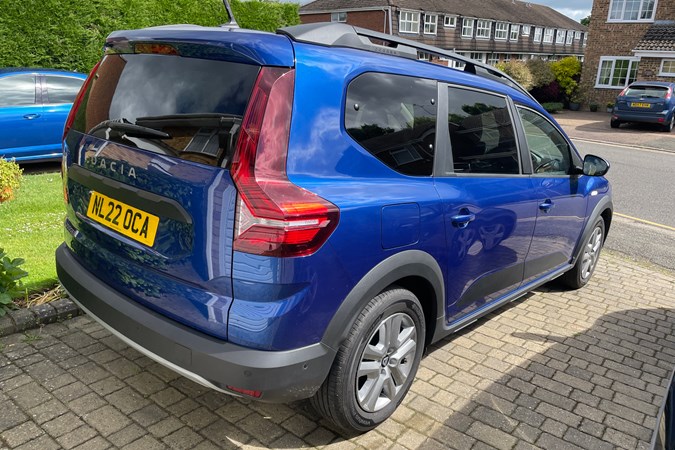
I could turn off the proximity sensor that locks and unlocks the car as I walk around from one side to the other, but that would require me to remember to physically lock it. After six months of just walking away with the key in my pocket there is a real danger I’d just forget and leave it unlocked.
Expensive wash
I’ve been stung for another unexpected cost while maintaining the Jogger recently. I chose to clean off the worst of the winter grime that had accumulated over recent weeks and decided to treat it to a local hand wash.
They did a wonderful job, but I was somewhat surprised to be hit with a higher-than-expected bill at the end. While I consider the Jogger to not be a huge car, and one that makes the most of the platform that also underpins the diminutive Sandero, it seems that the washers didn’t agree. Quite rightly, they pointed out that it is a seven seater. I wonder if they would view it as the same large car if I had taken the seats out and left them at home?
Desk removals
The car washers might have had a point on recent evidence, though. As vans and pickups editor for Parkers.co.uk, conversations with my colleagues often start as follows:
‘Hi, how are you? So, I am moving house/need to collect a table/have got a tip run planned, can I borrow a van?’
Recently, though colleague Richard had had his tape measure out and specifically requested to borrow the Jogger as he reckoned the desk he had bought would fit. It helps that he is a fan of the Dacia too though.
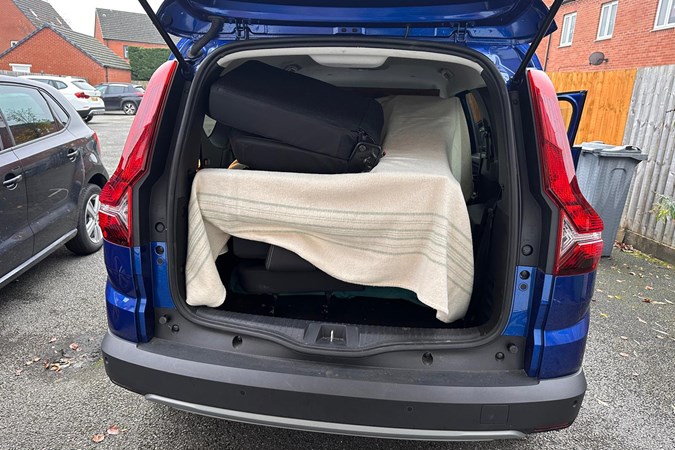
His calculations were spot on, and the desk slotted in with no issues, although he did have to remove the third row of seats to make it all work. Given the desk was several hundred miles away in Wales, it was for the best as it would have been a long wasted trip otherwise.
The other bonus of being able to take the Jogger was how refreshed Richard reported feeling at the end of a long drive. Its comfort, refinement and simple approach to covering long distances (no electronic adaptive cruise control for example) was a bonus.
Update 6: A fond farewell
I didn’t expect this to happen. I went into my time with the Dacia Jogger with a degree of cynicism that was threatening to go beyond the level we must employ in order to be truly objective about the cars we review. But I came out of it with an unforeseen level of fondness for it.
As previously stated, I wasn’t a big fan of the early Dacias on account of their feeling overly cheap and nasty, and my colleagues had raved about the Jogger to the extent that I was sure there had to be a catch.

True, there was a fairly big catch that emerged before I even took delivery of the Jogger, in the form of a staggeringly poor one-star Euro NCAP crash test score. Objectively I knew there was no justifiable reason why this car was any less safe than the Sandero that had managed a four-star rating (although granted this was back in 2013 when the test was less strict) and it had been marked down on a bit of a technicality. The low score was down to the low level of active safety equipment and the lack of seatbelt warnings in the third row.
Elsewhere it did better, with the equivalent of a four-star score for adult protection and a three-star rating for child protection. Not the highest, granted, but far from a one-star score and the recent toughening up of the testing means it could well be the equal of some higher rated slightly older cars.
As it was, the details are reassuring enough that I didn’t feel too bad about putting my young family in the back.
Family favourite
The small people never quite raved about the Jogger (the oldest tends to be wowed by big pickup trucks and the youngest is more interested in when her next snack is arriving) but there were no major complaints either. This was down largely to the car’s supremely excellent ride – it is so adept at ironing out bumps that we were able to float down some of the rutted country roads that are a feature around our way.
Sure, you didn’t feel like you could fling it around as a result, but I never wanted to run the risk of setting off any car sickness in the back so steered clear of that. Unfortunately, there was one such incident in our early days with the Jogger, which proved harder to clean out thanks to the poor quality carpets with their quite loose pile. A tighter, shorter pile would have made it easier to scrub and vacuum.
Rear seat space
Because we had two child seats in the second row most of the time, there were few opportunities to clamber into the third row of seats. On one occasion it was unavoidable, though, so I persuaded the in-laws to clamber into the boot.
This was a bit of a fiddle as it necessitated the removal of the lightest child seat in order to tilt the second row of seats forward. Said in-laws then climbed in and, thankfully for familial harmony, made themselves comfortable.
To check whether they were just being polite I swapped places and sat in the back for the return journey and was very pleasantly surprised. Sure, my feet were slightly higher than I would have ideally liked but there was plenty of room for them, I had enough space to not be bumping shoulders with my father-in-law and it was still comfortable, despite our being sat over the rear wheels. Given my fellow passenger fell asleep on the way home, I think we can mark the third row as being suitable for adults. So long as you can get in there.
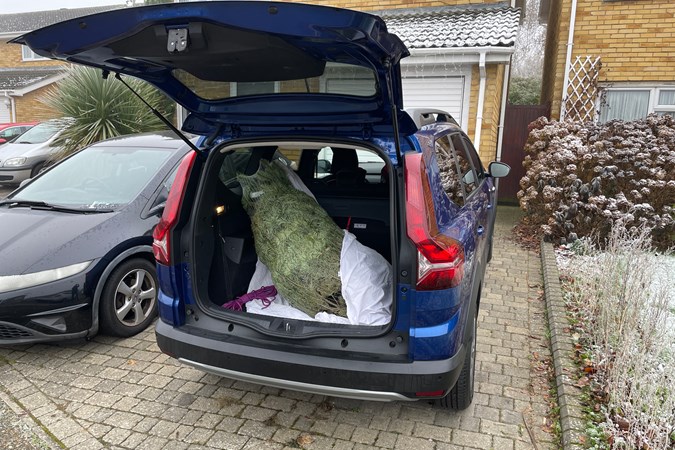
One of the Jogger’s final jobs with us was to act as transport for the Webster family Christmas tree. I was all ready to get out the rope and lash it to the roof, but the boot ended up swallowing it with minimal fuss. It really is huge back there.
Reliable and consistent
I’m delighted to report that there were no faults with the Jogger while it was with us. The simple infotainment system never threw up any oddities, the air conditioning system stayed hot and cold when it was supposed to and nothing broke. This seems like a simple thing to ask of a brand-new car, but it is not universally the case so it is a big tick on the Jogger’s part.
The fuel economy was consistent and reliable, too, with the overall average ending up at a very impressive 47.1mpg, which is close enough to the official claimed 48.7mpg that I am definitely not going to complain about it. The majority of tanks were just below this in the mid-40s, while a couple of motorway-heavy trips pulled the average up.
Humble pie eaten?
So, with so much positivity around my experience with the Jogger, have I been won over? Almost, is the honest answer. Certainly, I came away with a much more positive impression than I expected, as a result of having found very few reasons to dislike it and plenty more to recommend it. I even got over my initial dislike of the slightly frumpy looks.
The wariness remains, though. I know full well that it is not entirely logical, but it is around that safety score. I KNOW it is not an unsafe car, and I am well aware that the safety systems it is missing are the things that my colleagues and I lament for being too intrusive in modern cars. But but but. If I was drawing up a list of contenders for a car to carry around own young family, would I be comfortable putting a car with a single star in the industry standard safety crash test on that spreadsheet?
I honestly can’t answer that and probably won’t know exactly how I feel unless I am in the position of handing over the money at a dealer, or not. I can happily recommend the Jogger as a great family car, but I wouldn’t be able to hold it against you if you can’t get past that crash test score, even if the fault ultimately lies with Euro NCAP.


